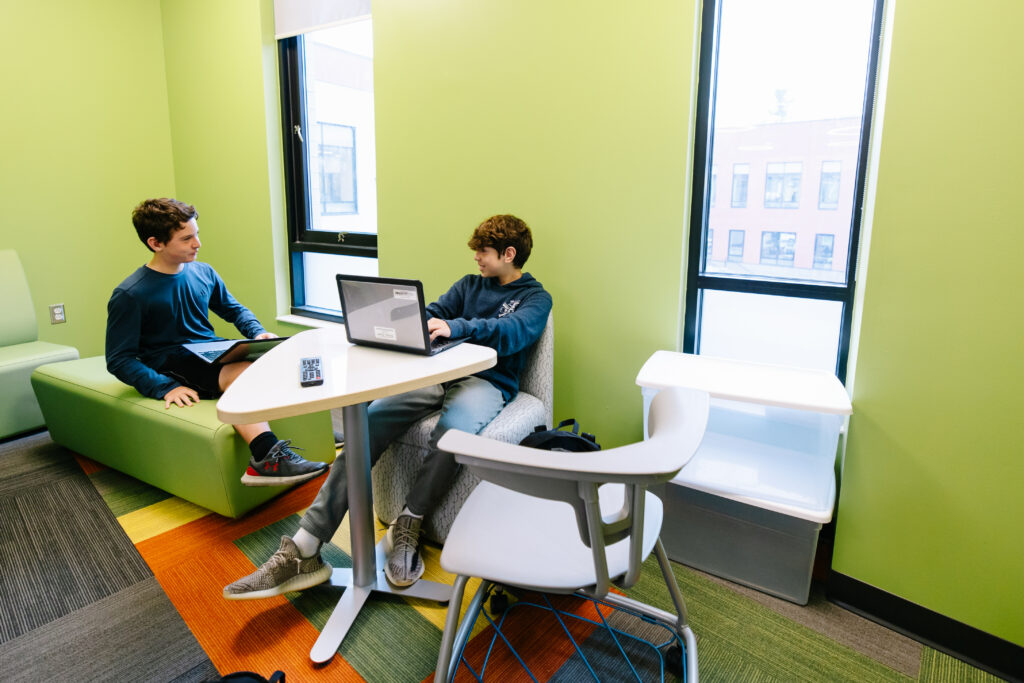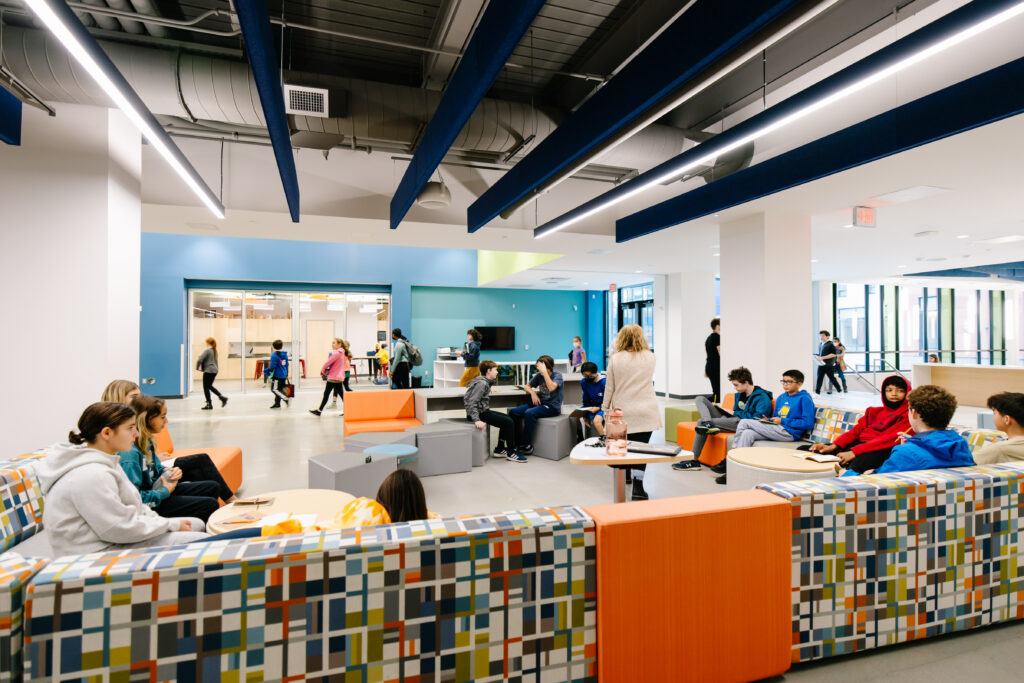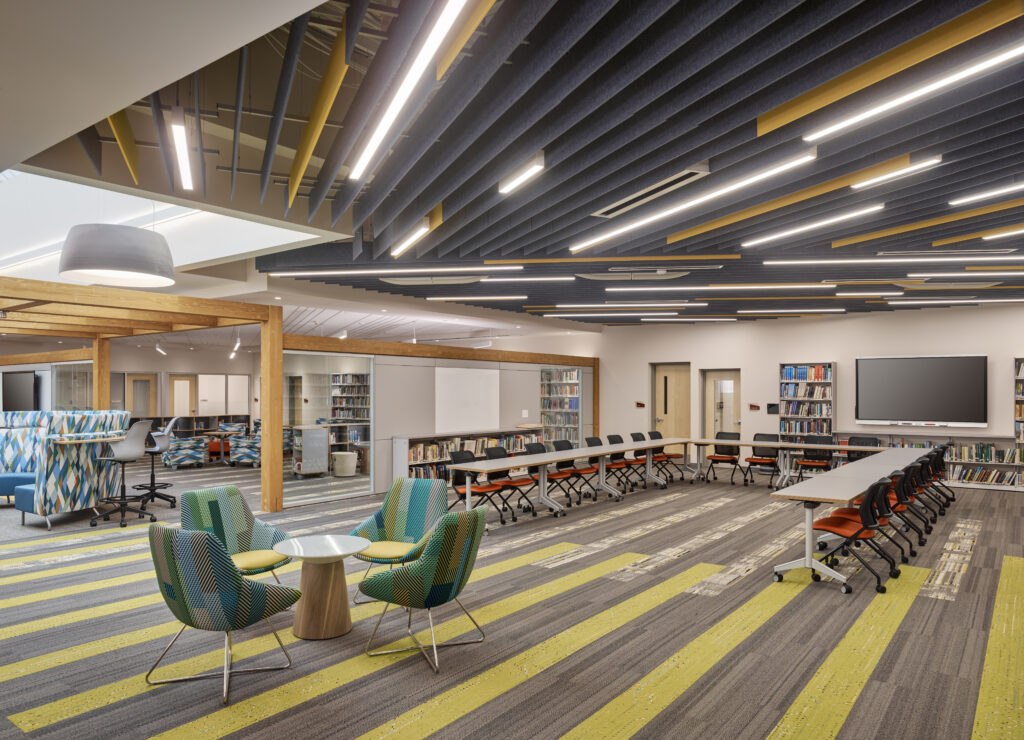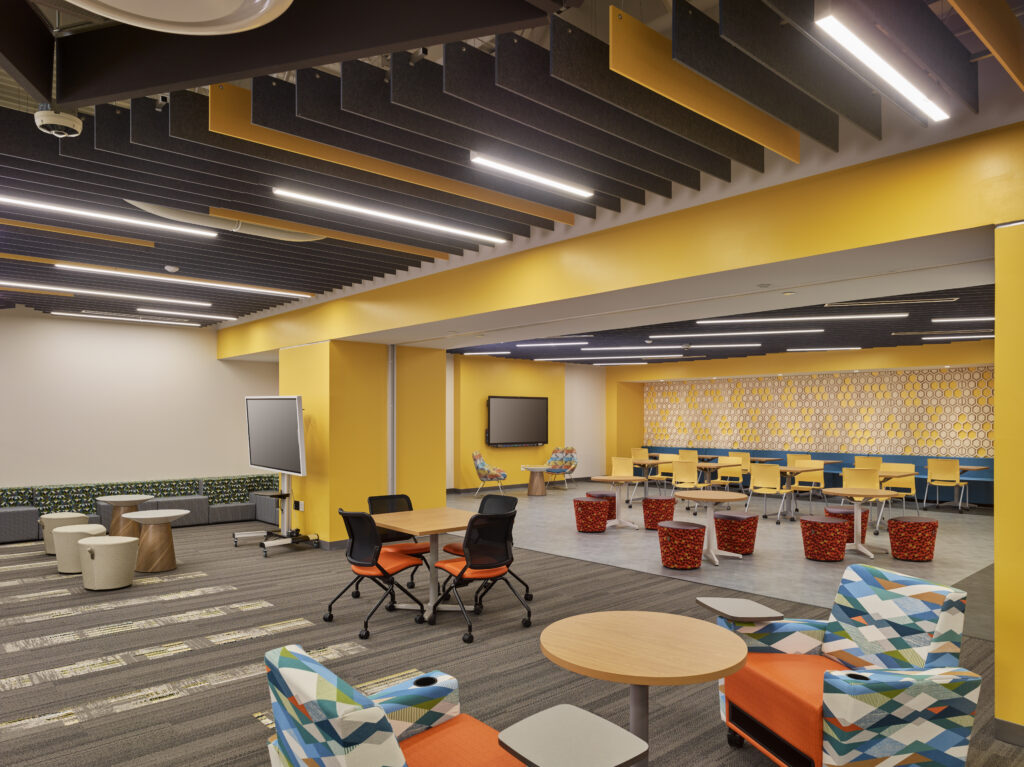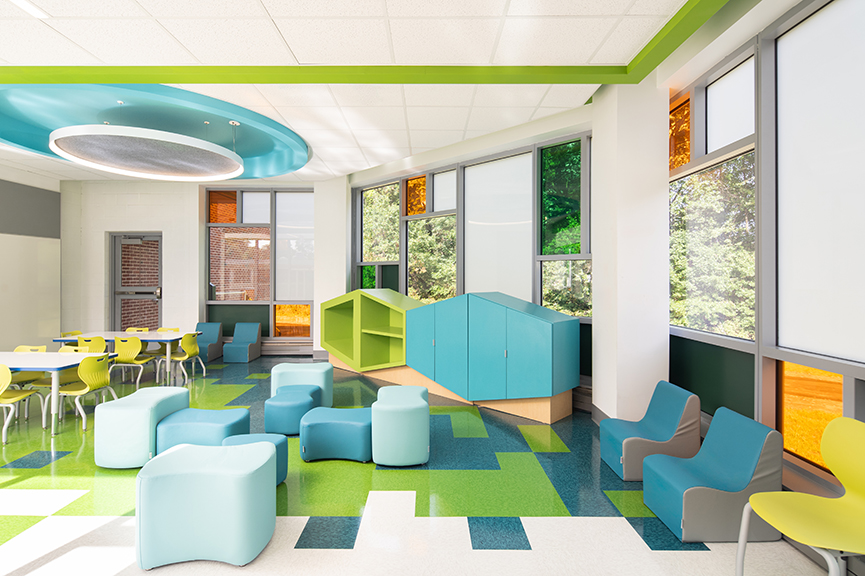Designing to Create Future Ready Schools
By Scott Downie and Justin Kozik
As we prepare our students for a world characterized by rapid technological advancements, schools as destinations for learning need to change. Many schools are configured based on the industrial model of the last century. Adaptability, critical thinking, and innovative problem-solving are integrated into teaching and learning today, driving the need for schools that step outside the industrial model of educational delivery, and “future-ready schools” are an imperative for educational delivery to be able to continue to grow with our learners.
Traditional “cells and bells” schools with classrooms built around rows of rigid desks facing a teacher who imparts knowledge from the front of the room are no longer responsive to learning needs. Today’s students have access to a universe of information from a multitude of sources. They need to learn how to digest that, understand it, interpret it, and engage it with the reality of the world they are building. Each student is different and learns differently. Creating environments where they can capitalize on the opportunities of the modern world requires project-based, learner-centric space design. Today, learning happens everywhere, and school buildings need to adapt to support and inspire today’s learners.
The learner-centric model moves us in the right direction by focusing on the student and supporting the activities in their learning process. Modern school designs recognize the impact that physical spaces can have on learning and well-being. Depending on how they are designed, they can support or hinder today’s learning process and opportunities. Emphasizing diversity, comfort, multi-functionality, adaptability, flexibility, and seamless integration of technology keeps a 21st century educational space from limiting what can happen within its walls. Educational spaces must enable teachers and learners to work with each other in new and diverse ways throughout every school day and across a wide diversity of learning modalities and activities.
Diverse Learning Environments
It is crucial for learning environments to empower and embrace every student, to enable each to see the potential of where the learning process can take them. Numerous studies have now laid out for us what we always should have known – learning improves when students are comfortable, not all crammed into the same seat and type of space. Better acoustics and daylighting improve both the school environment and the academic performance within. Educational spaces need to be adaptable and engaging for all learners. They need to support a broad range of collaboration or individual paced activities, small to large groups, and ad-hoc teacher and student-driven activities. It’s about creating a variety of spaces that embrace a broad range of activities and can adapt to different learning styles.
Adjustable and varied desks and chairs allow for each student’s height, size and ergonomic preferences, reducing distractions. Offering different types of seating within one space – for example, desk chairs, lounge seating, and high stools in the same classroom – can also help to increase student engagement. Spaces featuring good acoustics, daylighting, and color can help learners engage with the space and the school, including with the identity of the institution, strengthening connections and fostering a sense of pride and belonging. Home-like elements such as comfortable work areas and relaxed atmospheres help students feel at ease. When an institution can tailor to the diversity of their students, learning is improved across the spectrum.
Interdisciplinary Studies
21st century schools focus on project-based, interdisciplinary learning rather than the traditional topic silos where subjects are taught separately by teachers that operate independently. Interdisciplinary learning helps students understand the connections between diverse information and activities and how they apply in real-world situations. Teachers operating too independently may also miss out on cross-curricular opportunities. Interdisciplinary studies encourage collaboration, refine communication, nurture relationships, and activate curiosity. As a result, a professional teacher’s space can enhance their ability to work together in different ways untethering them from a specific space or classroom, to help them achieve more right along with their students. Flexible classrooms can accommodate varied pace learning, support different learning styles and activities, and cater to group discussions for interdisciplinary studies.
Reconfigurable Spaces
Flexible-learning environments allow learning to be more agile and adaptable. Modular lightweight furniture supporting different learning styles can be easily reconfigured as needed based on learning activity. Seating can quickly be arranged into social collaboration or small groups, for group or individual study, or be completely pushed aside to create open spaces for large group activities. Moveable glass walls or partitions can join spaces on the fly for group work or break-out sessions and enhance cross-space supervision. Reconfigurable spaces help students apply foundational knowledge, offer socialization, and encourage global learning. They are a catalyst for learning effectiveness and student engagement.
Technology Integration
The rapid evolution of technology has changed how we learn. This generation of students has grown up using intuitive devices and having access to a world of information in an instant. Learning needs to be able to happen anywhere in and around a school, and mobile devices and reliable robust Wi-Fi networks are a must for the modern school. Students need to be able to connect portable devices, interact with projection tools, and be able to access and share information with their peers from and to anywhere.
Integrated technology in schools can look like: wireless presentations and group learning; virtual field trips; vast online libraries; interactive touchscreen monitors; furniture that can accommodate portable devices; or adaptive learning software and apps. Technology can expand educational boundaries and enrich learning experiences, while also preparing students for a future where digital literacy is paramount.
By embracing innovation, prioritizing student well-being, and fostering an inclusive environment, we can create learning spaces that not only prepare students for the challenges ahead but also inspire them to become lifelong learners and responsible citizens. The path to future-ready education is not just about technology or curricula; it’s about designing spaces that help foster a culture of adaptability and creativity.
—
At Spiezle Architectural Group, we understand how to design future ready schools. Contact us today to learn more about our services and how we can help you create a school design that meets your needs!
